Testing Crack Resistance of Non-Load-Bearing Ceramic Walls with Door Openings
Abstract
1. Introduction
2. Materials and Methods
- Laboratory tests: Their purpose was to characterize the used materials and obtain the strength parameters of the walls in accordance with the protocol provided in the standards [28,29,30,31,32]. The scope of the research included, among others, the following mechanical parameters of masonry materials and masonry samples:
- Test code LAB 1—mechanical parameters of the ceramic bricks and mortar;
- LAB 2—compressive strength of the tested wall samples in the horizontal and vertical directions;
- LAB 3—tensile strength of the tested wall samples in the horizontal and vertical directions;
- LAB 4—shear strength of the tested wall and its internal friction coefficient.
- Numerical analyses performed using the Finite Element Method (FEM) in the ANSYS program environment: Mechanical parameters obtained on the basis of the above-mentioned laboratory tests were used for modeling the walls. The full mechanical characteristics of the examined walls used in modeling were the reason for the application of the homogeneous isotropic material model. Numerical analyses were carried out for walls 3.07 m high, 5.75 m long, and 12 cm thick with a door opening 2.1 m high and 0.99 m wide. The following two wall models were analyzed due to the types of their connection with the building structure along their vertical edges:
- FEM TEST 1—free connection in the horizontal and vertical direction of the wall surface;
- FEM TEST 2—rigid (model of toothing connection with perpendicular load-bearing walls).
- Tests of the full-scale partitions conducted on walls constructed on reinforced concrete floors in a real building: Partitions have been prepared with the use of the same materials and protocols as in laboratory measurements and FEM analysis. Two partitions with door openings in the middle of their span and the same dimensions and types of vertical connections as in FEM analysis has been tested, which are as follows:
- BUILD 1—vertical connection of the wall with flexible steel anchors restraining relocation only in the direction transversal to its surface;
- BUILD 2—rigid toothing connection.
2.1. Materials
2.2. Numerical Calculations
2.3. Testing of Full-Scale Walls
3. Results and Discussion
3.1. Results of Laboratory Measurements
3.2. Results of Numerical Calculations
- -
- the distance of door opening from the vertical edge of the wall;
- -
- the ratio of its length to its height;
- -
- wall strength and deformability;
- -
- method of connecting the wall with vertical load-bearing structures of the building.
3.3. Experimental Tests in the Facility
3.4. Research Findings and Their Application
4. Conclusions
- The most strained area of masonry partition walls supported on reinforced concrete floors are corners of door openings together with the strip of wall above them;
- Cracking of the wall in this area occurs mainly as a result of tensile stresses, which appeared, in the case of the lack of rigid connection, between vertical edges of the wall with adjacent vertical load-bearing structures;
- The appearance of a gap between the bottom edge of the wall and the floor results in redistribution of load favorable for the floor from the weight of the partition wall, which concentrates in supporting zones of the floor;
- In the case of the completed experimental tests, walls made of ceramic brick with the span of 6 m and vertical edges connected freely with the building structure cracked at the relative deflection of the floor under the wall, with the value equal to 1/958 of the floor’s length;
- Deformation of the foundation equal to 1/958 that is causing cracking of the tested wall BUILD 1 was comparable with the results of wall tests on the 1: 3 scale carried out by Pfeffermann [7];
- Application of rigid connection along vertical edges of the walls, while maintaining appropriate expansion joints along both horizontal edges, allowed the avoidance of cracking of the wall across the entire measuring range. The wall was not damaged at the floor deflection equal to 1/479 of its length;
- Floor deflection of 1/479 does not exceed the limit deflection values provided in the standards;
- The measured tensile strength of the tested walls in the horizontal direction was 0.22 MPa;
- Strength value obtained in laboratory tests of the wall samples corresponded to destructive values measured for the full-scale wall built in the construction site;
- The numerical analyses allowed the determination of dependency between the change in location of the door opening along the length of the tested walls and tensile stresses in the zone of its corners;
- It was concluded that the value of the main tensile stresses in the corners of the opening in walls not connected along vertical edges with the load-bearing structure of the building depends on the friction coefficient (tg α) between the masonry wall and the deflecting floor. With the increase of friction coefficient tgα from value 0 (free connection) to 1 (rigid connection in the horizontal direction), the values of tensile stresses in the zone of the door opening corner decrease by five times;
- The conducted analyses may have practical application for the calculation of tensile stresses in non-load-bearing walls made of brick elements with a door opening and in the design of this type of structure.
Author Contributions
Funding
Institutional Review Board Statement
Informed Consent Statement
Conflicts of Interest
References
- Drobiec, Ł. Repair of the cracks and reinforcement of the brick walls. In Proceedings of the 30th Conference Structural Designer Workshop, Szczyrk, Poland, 25–28 March 2015; pp. 324–398. (In Polish). [Google Scholar]
- Małyszko, L.; Orłowicz, R. Selected methods of repairing scratched masonry walls. Build. Rev. 2008, 12, 40–46. [Google Scholar]
- Production of major construction products in December 2020. European Statistical System, Statistics Poland. Available online: https://stat.gov.pl/en/topics/industry-construction-fixed-assets/construction/ (accessed on 20 February 2021).
- Meyerhof, G. Some Recent Foundation Research and its Application to Design. Struct. Eng. 1953, 31, 151–167. [Google Scholar]
- Beranek, W. The Prediction of Damage to Masonry Buildings Caused by Subsoil Settlements. Heron 1987, 32, 55–93. [Google Scholar]
- Pfeffermann, D. Deformations admissibles dans le batiment. Notes d’Information Technol. 1981, 132, 29. [Google Scholar]
- Rolanda, O.G., Jr.; Ramal, H.M.A.; Correa, M.R.S. Experimental and numerical analysis of masonry load-bearing walls subjected to differential settlements. In Proceedings of the 9th North American Masonry Conference, Clemson, SC, USA, 1–4 June 2003; pp. 134–145. [Google Scholar]
- Loots, J.J.; van Zijl, G.P.A.G. Experimental verification of settlement induced damage to masonry walls. Proceedings of 13th International Brick and Block Masonry Conference, Amsterdam, The Netherlands, 4–7 July 2004. [Google Scholar]
- Piekarczyk, A. Cracking and Failure Mechanism of Masonry Walls Loaded Vertically and Supported by Deflecting Structural Member. Proceedings of World Multidisciplinary Civil Engineering-Architecture-Urban Planning Symposium 2018, Prague, Czech Republic, 18–22 June 2018. [Google Scholar]
- Kania, T.; Stawiski, B. Research on crack formation in gypsum partitions with doorway by means of FEM and fracture mechanics. Proceedings of World Multidisciplinary Civil Engineering-Architecture-Urban Planning Symposium–WMCAUS, Prague, Czech Republic, 12–16 June 2017. [Google Scholar]
- Derkach, V.N. Investigations of the stress-strain state of stone partitions during floor deflection. Ind. Civ. Constr. 2013, 6, 62–66. [Google Scholar]
- Brameshuber, W.; Beer, I.; Kang, B.-G. Untersuchungen zur Vermeidung von Rißschäden bei nicht tragenden Trennwänden. Mauerwerk 2007, 11, 54–62. [Google Scholar] [CrossRef]
- Stawiski, B. Masonry Structures. Repairs and Reinforcements; Polcen: Warsaw, Poland, 2014. (In Polish) [Google Scholar]
- Dmochowski, G.; Szolomicki, J. Technical and Structural Problems Related to the Interaction between a Deep Excavation and Adjacent Existing Buildings. Appl. Sci. 2021, 11, 481. [Google Scholar] [CrossRef]
- Jasinski, R. Identification of Stress States in Compressed Masonry Walls Using a Non-Destructive Technique (NDT). Materials 2020, 13, 2852. [Google Scholar] [CrossRef] [PubMed]
- Jasiński, R.; Drobiec, Ł.; Mazur, W. Validation of Selected Non-Destructive Methods for Determining the Compressive Strength of Masonry Units Made of Autoclaved Aerated Concrete. Materials 2019, 12, 389. [Google Scholar] [CrossRef]
- American Concrete Institute. ACI 318-08: Building Code. Requirements for Structural Concrete and Commentary; ACI Committee 318; American Concrete Institute: Farmington Hills, MI, USA, 2008. [Google Scholar]
- Masonry Standards Joint Committee. ACI-530-08/ASCE 5-08/TMS 402-08: Building Code. Requirements for Masonry Structures; Masonry Standards Joint Committee: Farmington Hills, MI, USA, 2004. [Google Scholar]
- UK National Standards Body. BS 5628-2: Code of practice for the use of masonry. In Part 2: Structural Use of Reinforced and Prestressed Masonry; UK National Standards Body: London, UK, 2005. [Google Scholar]
- Deutsches Institut für Normung. DIN 1045-1: Tragwerke aus Beton, Stallbeton und Spannbeton. In Teil 1: Bemessung und Konstruktion; Deutsches Institut für Normung: Berlin, Germany, 2008. [Google Scholar]
- Bureau de Normalisation. NBN B 03-003: Deformations des structures. In Valeurs limites de deformation—Batiments; Bureau de Normalisation: Brussel, Belgium, 2003. [Google Scholar]
- European Committee for Standardization. EN 13747: 2010. Precast Concrete Products—Floor Plates for Floor Systems; European Committee for Standardization: Brussels, Belgium, 2010. [Google Scholar]
- European Committee for Standardization. EN 1992-1-1: 2008. Eurocode 2: Design of concrete structures - Part 1-1: General rules and rules for buildings; European Committee for Standardization: Brussels, Belgium, 2008. [Google Scholar]
- Polish Committee for Standardization. PN-B-03264: 2002: Reinforced and prestressed concrete structures - Static calculations and design; Polish Committee for Standardization: Warsaw, Poland, 2002. [Google Scholar]
- European Committee for Standardization. EN 1996-1-1 EN 1996-1-1: Eurocode 6: Design of Masonry Structures - Part 1-1: General Rules for Reinforced and Unreinforced Masonry Structures; European Committee for Standardization: Brussels, Belgium, 2005. [Google Scholar]
- Raj, A.; Borsaikia, A.C.; Dixit, U.S. Evaluation of Mechanical Properties of Autoclaved Aerated Concrete (AAC) Block and its Masonry. J. Inst. Eng. India Ser. A 2020, 315–325. [Google Scholar] [CrossRef]
- Shabbara, R.; Nedwella, P.; Zhangjian, W. Influence of silica fume content on the properties of aerated concrete. In Proceedings of the 36th Cement and Concrete Science Conference At: Royal welsh collage of Music and Drama, Cardiff, Welsh, 5–6 October 2016. [Google Scholar]
- European Committee for Standardization. EN 1015-11 Methods of Test for Mortar for Masonry-Part 11: Determination of Flexural and Compressive Strength of Hardened Mortar; European Committee for Standardization: Brussels, Belgium, 2019. [Google Scholar]
- European Committee for Standardization. EN 1052-1 Methods of Test for Masonry-Part 1: Determination of Compressive Strength; European Committee for Standardization: Brussels, Belgium, 1998. [Google Scholar]
- Drobiec, Ł.; Jasiński, R.; Mazur, W.; Jonkiel, R. The effect of the strengthening of AAC masonry walls using FRCM system. Cem. Wapno Beton 2020, 25, 376–389. [Google Scholar] [CrossRef]
- Drobiec, Ł.; Jasiński, R.; Mazur, W.; Rybraczyk, T. Numerical Verification of Interaction between Masonry with Precast Reinforced Lintel Made of AAC and Reinforced Concrete Confining Elements. Appl. Sci. 2020, 10, 5446. [Google Scholar] [CrossRef]
- European Committee for Standardization. EN 1052-3 Methods of Test for Masonry-Part 3: Determination of Initial Shear Strength; European Committee for Standardization: Brussels, Belgium, 2002. [Google Scholar]
- Stroyizdat. SNiP 2.08.01-85 Manual for the Design of Residential Buildings. Issue 3: Constructions of Residential Buildings, Dwellings of the State Committee for Architecture and Construction; Stroyizdat: Moscow, Russia, 1989. (In Russian) [Google Scholar]
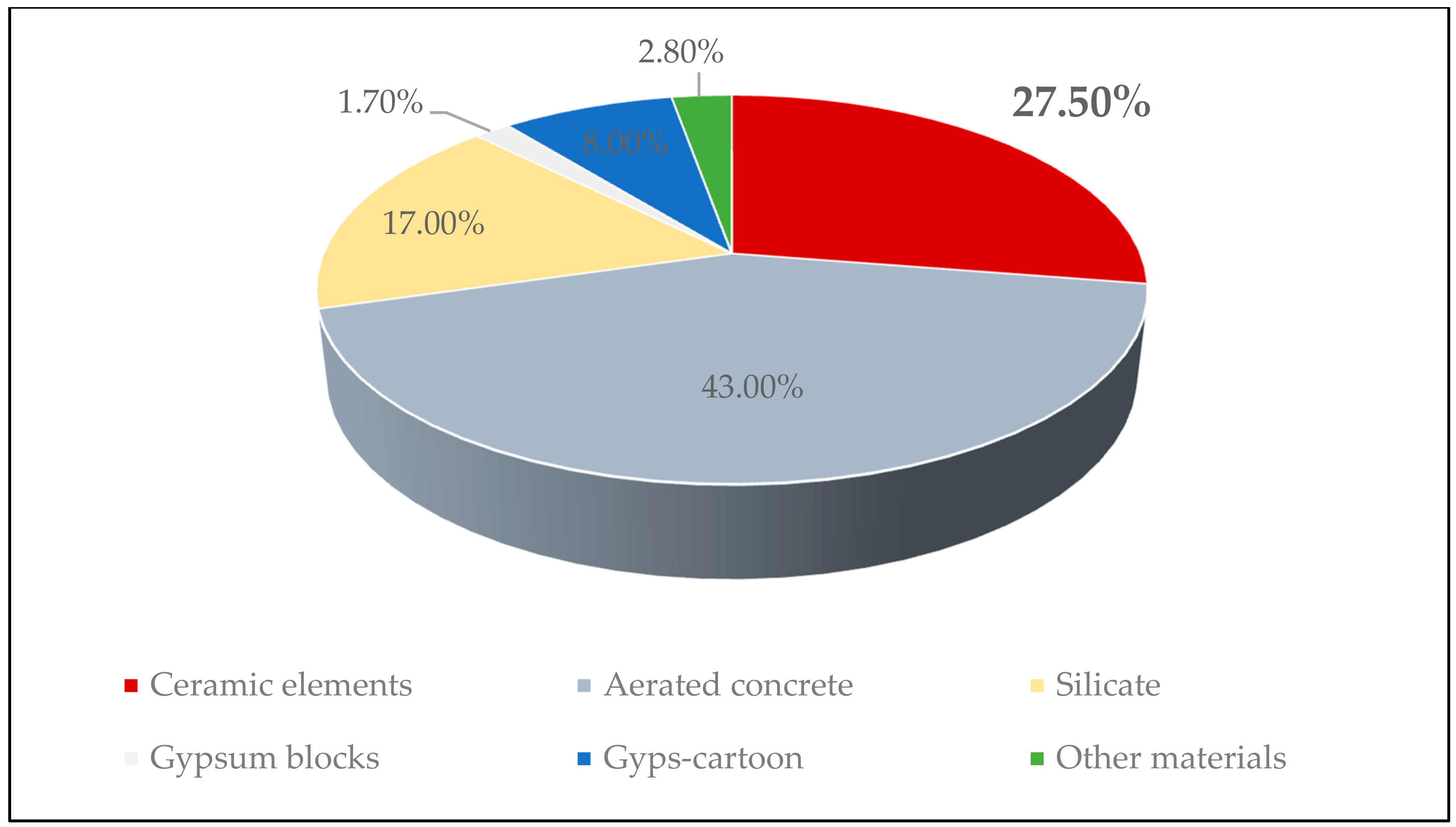

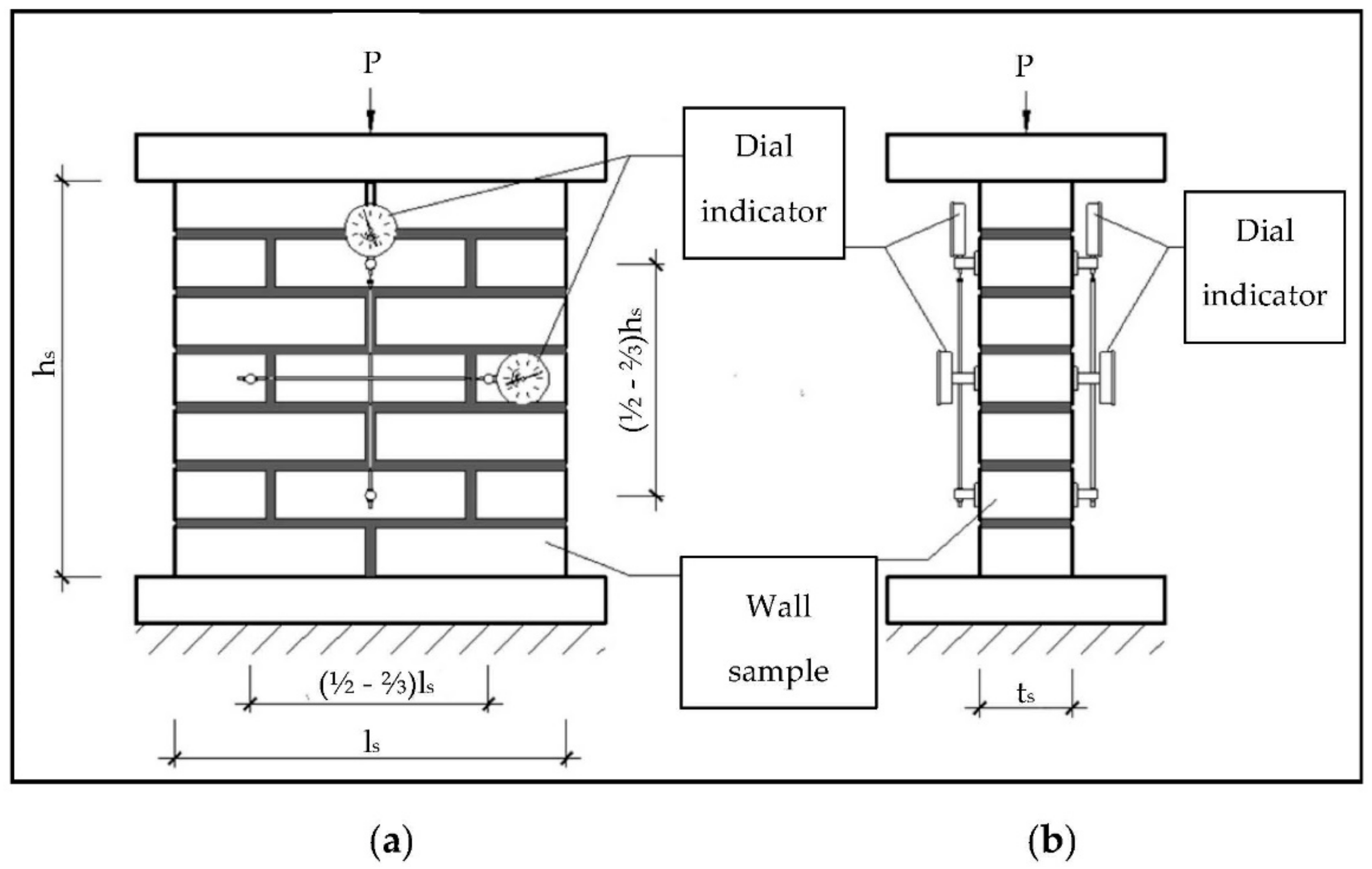
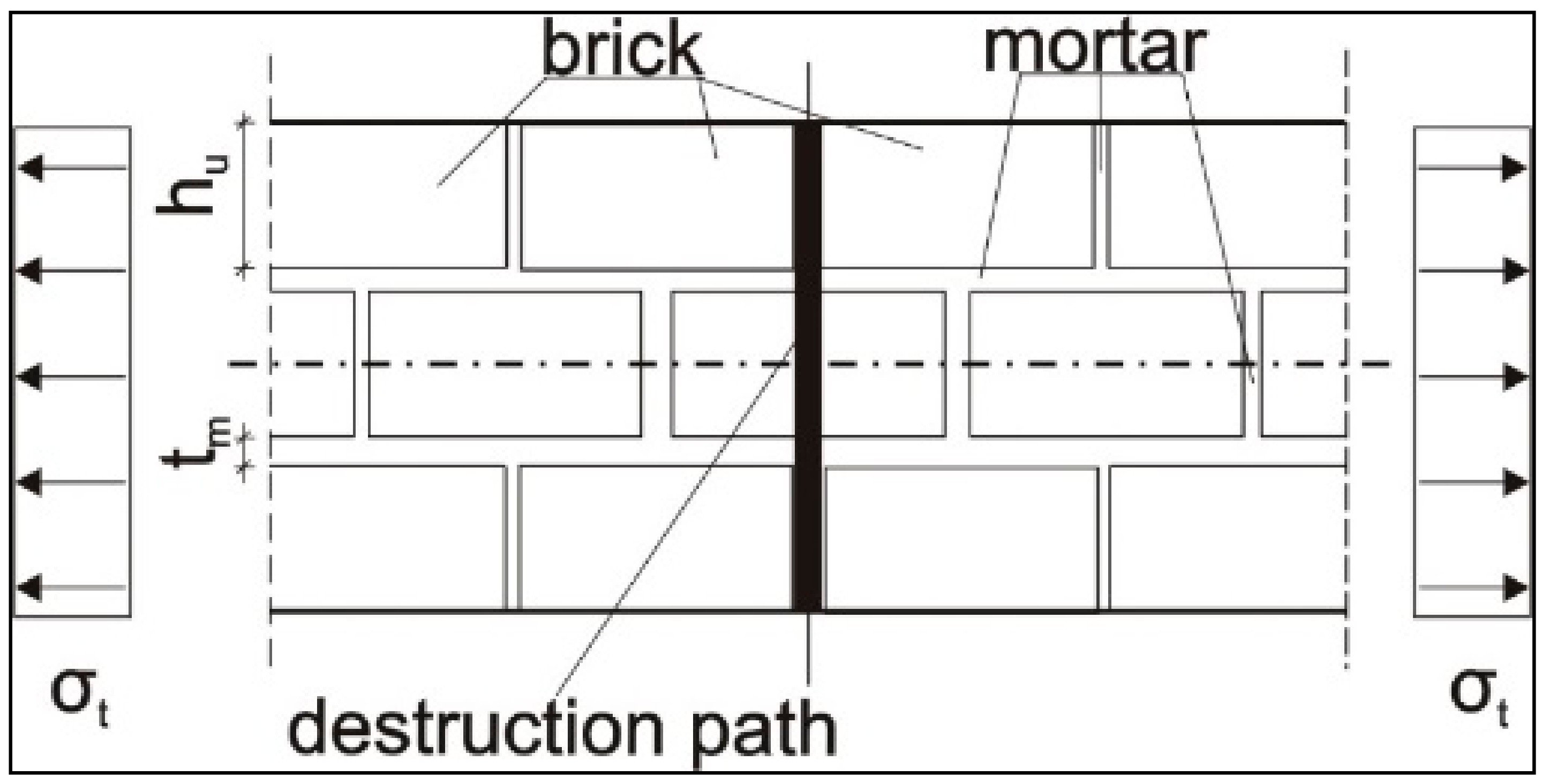
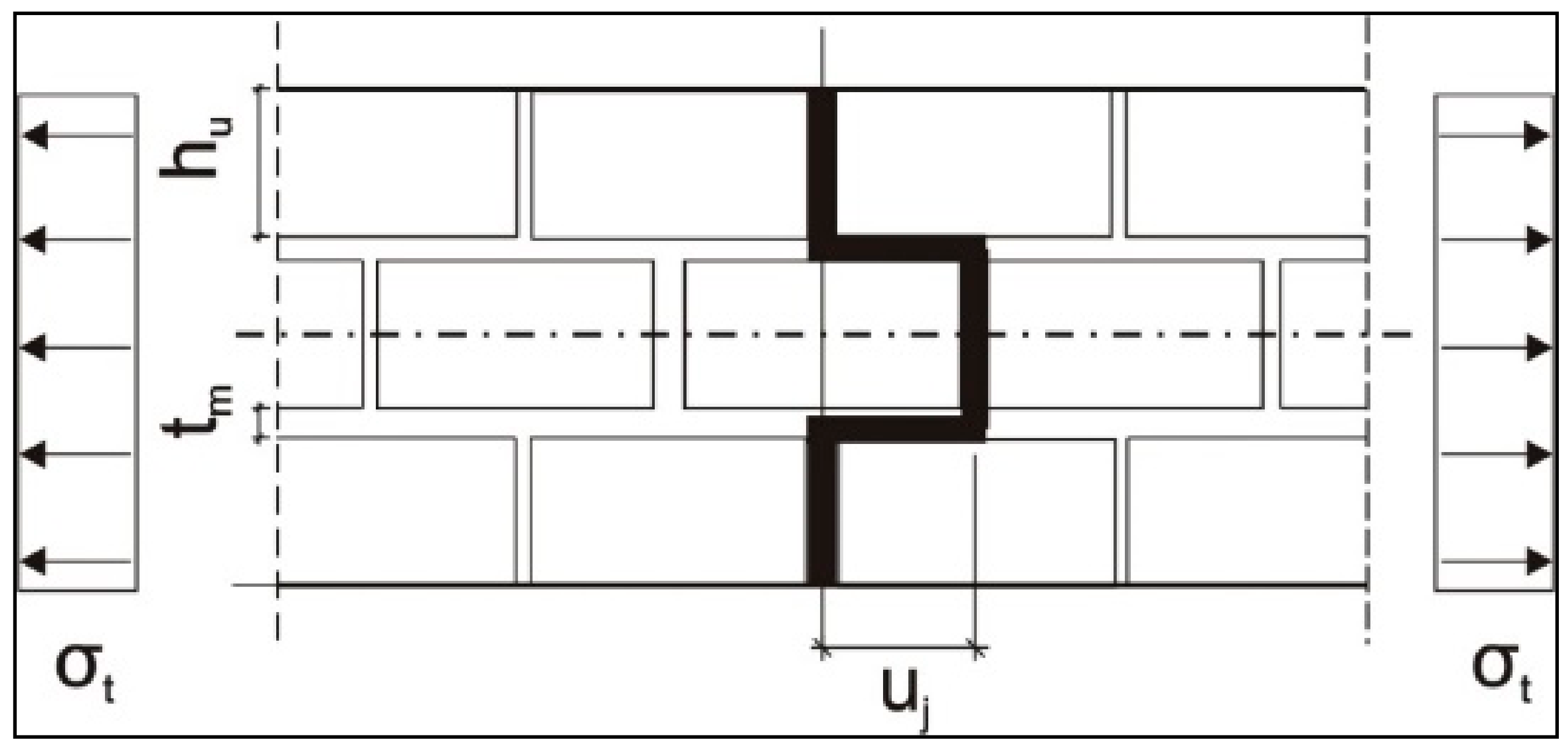


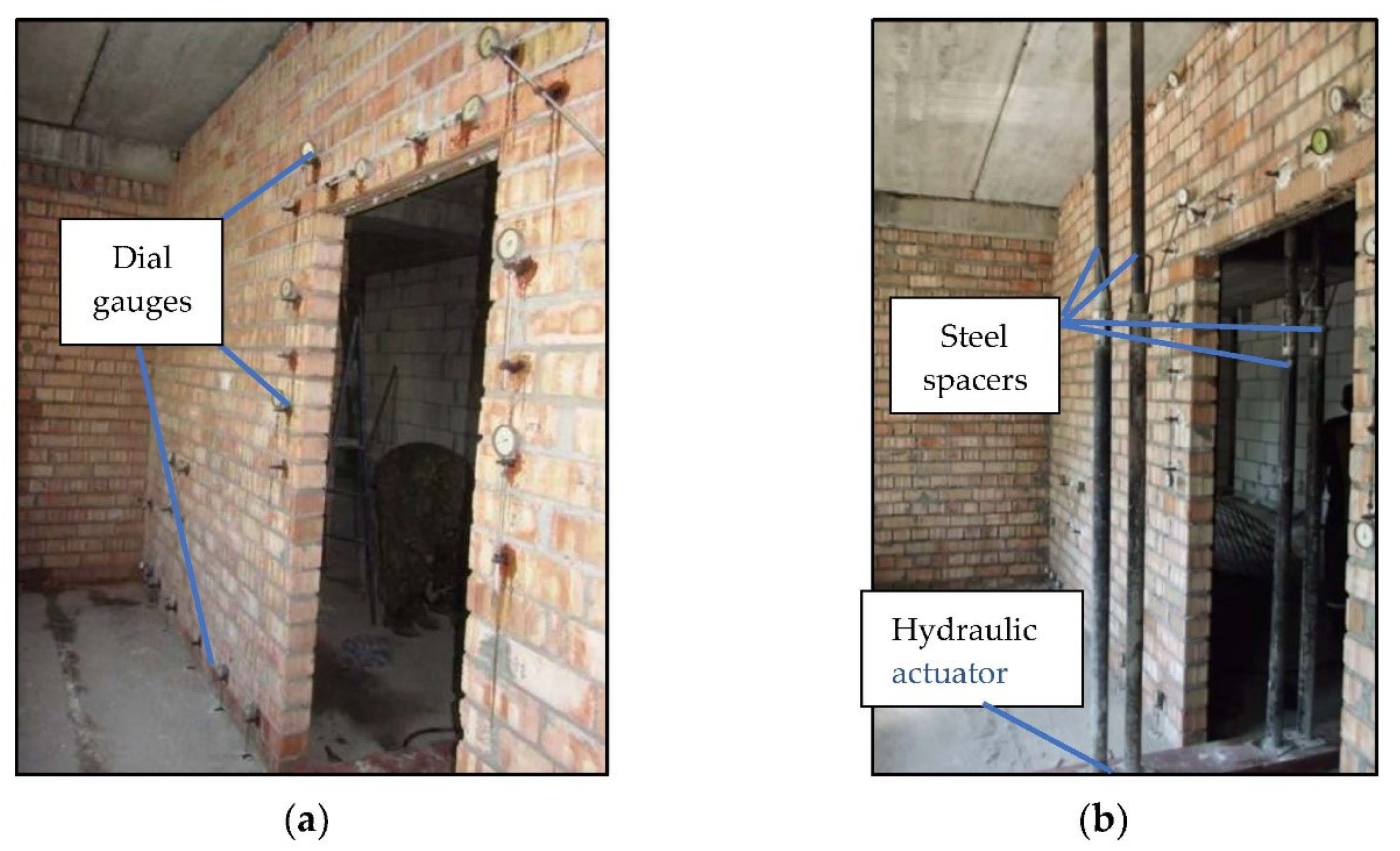
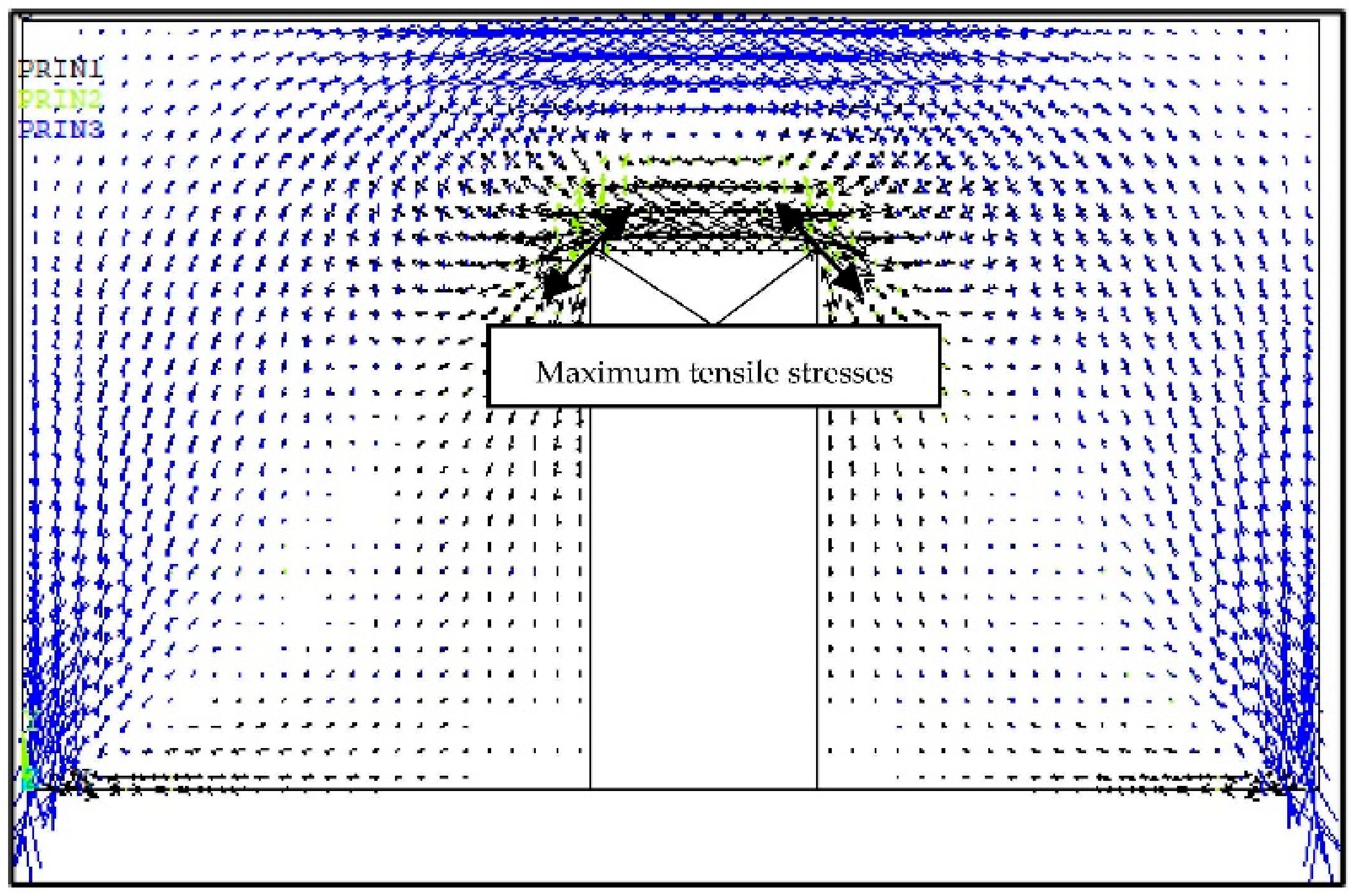
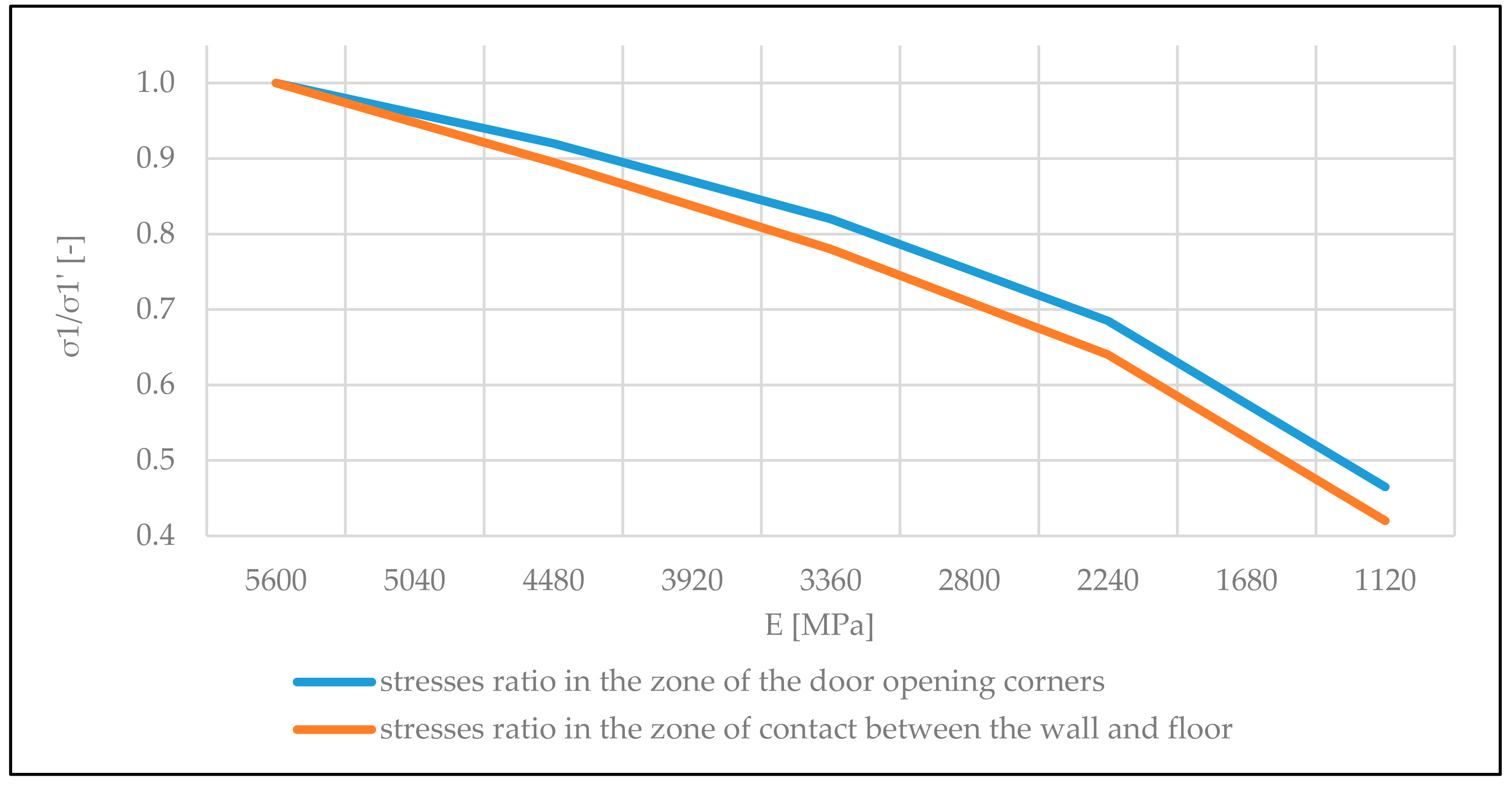
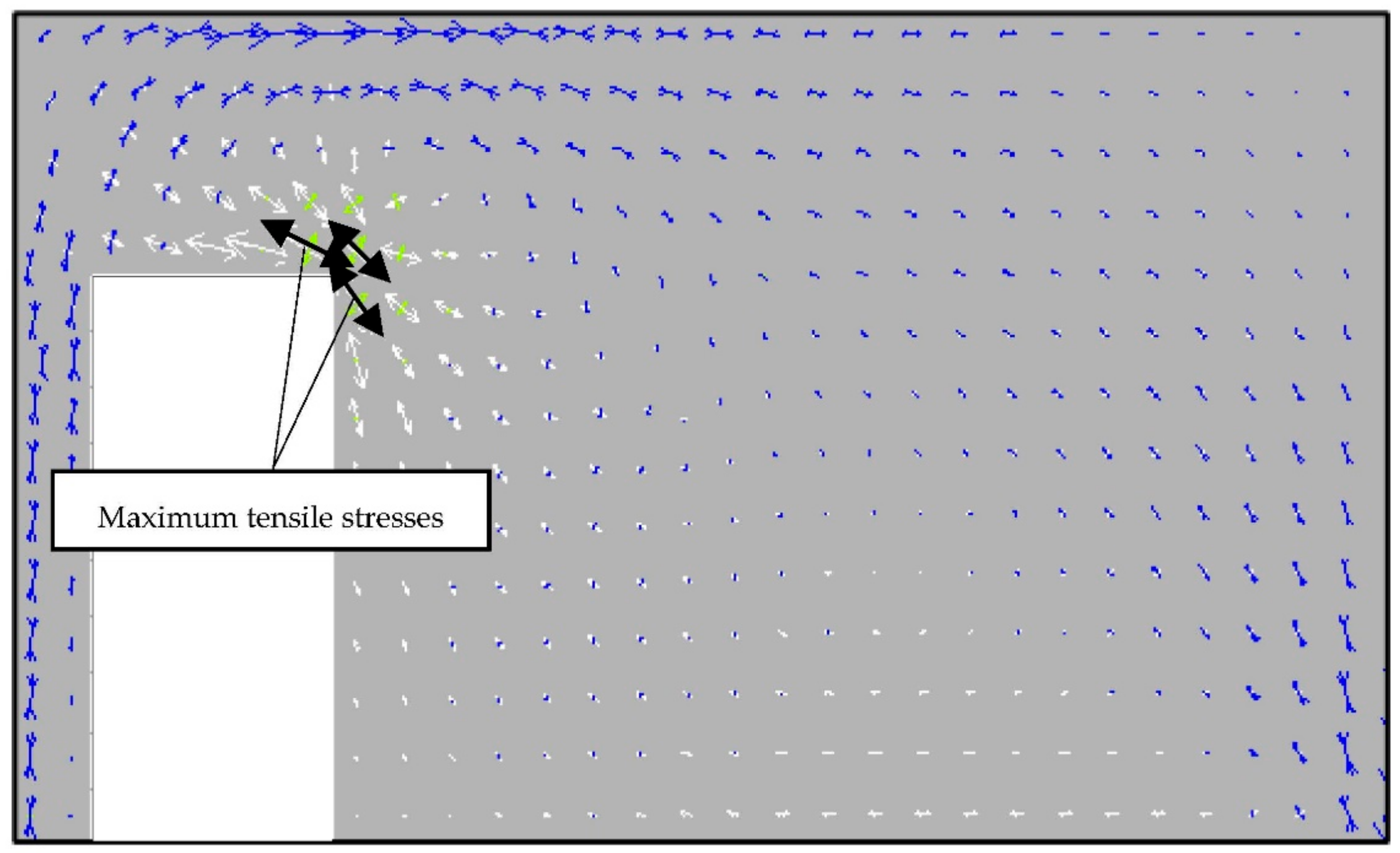
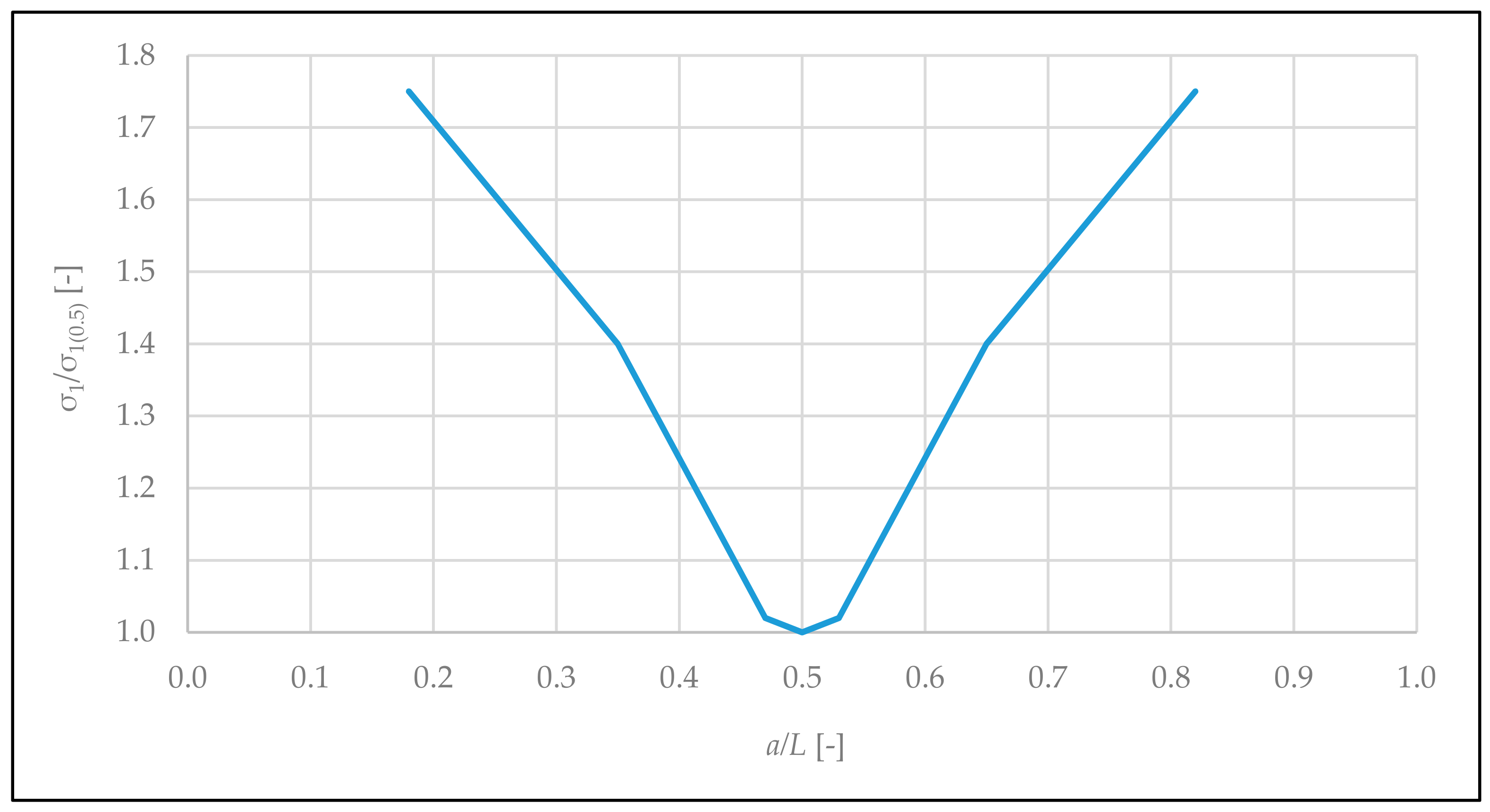
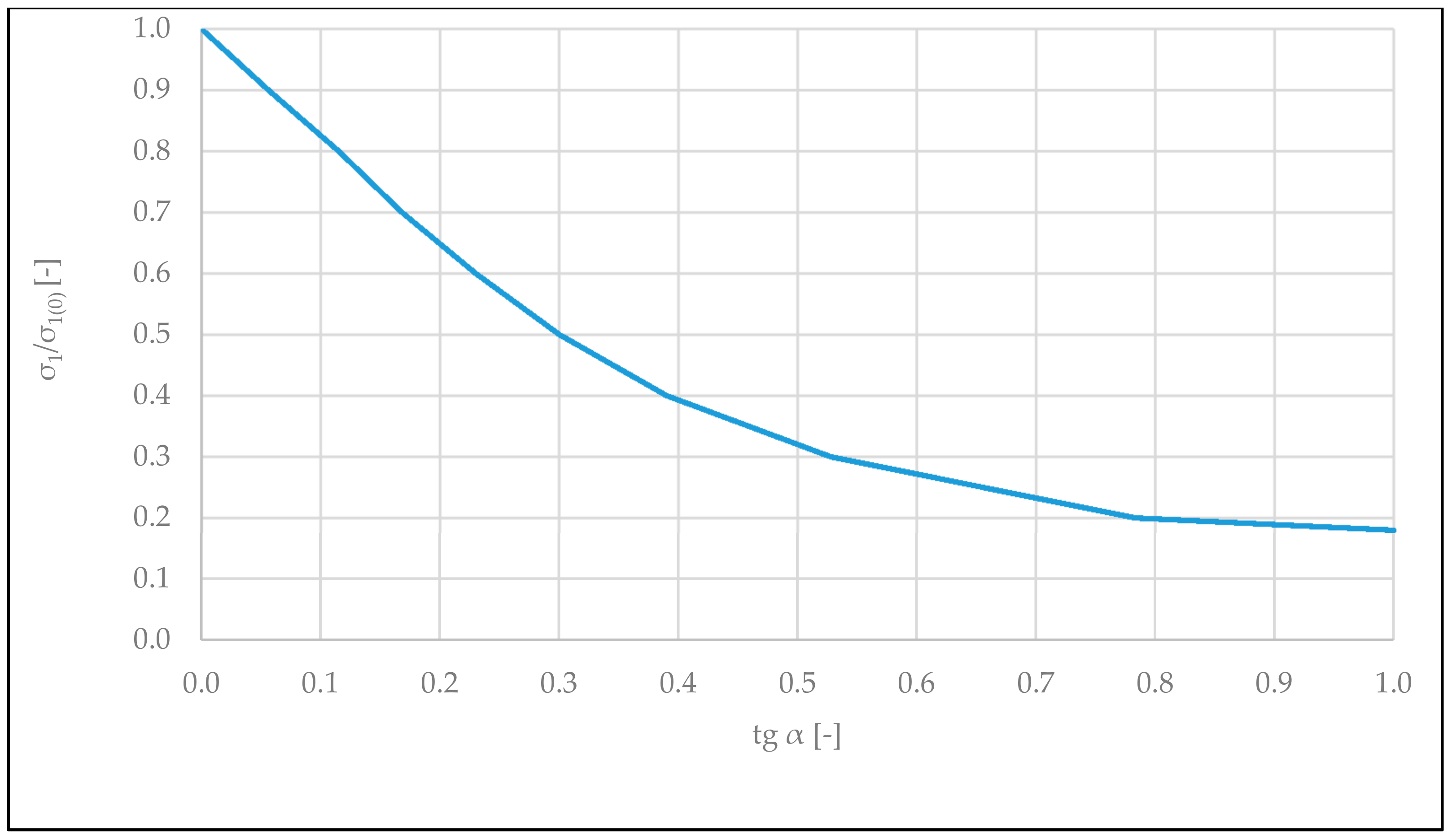

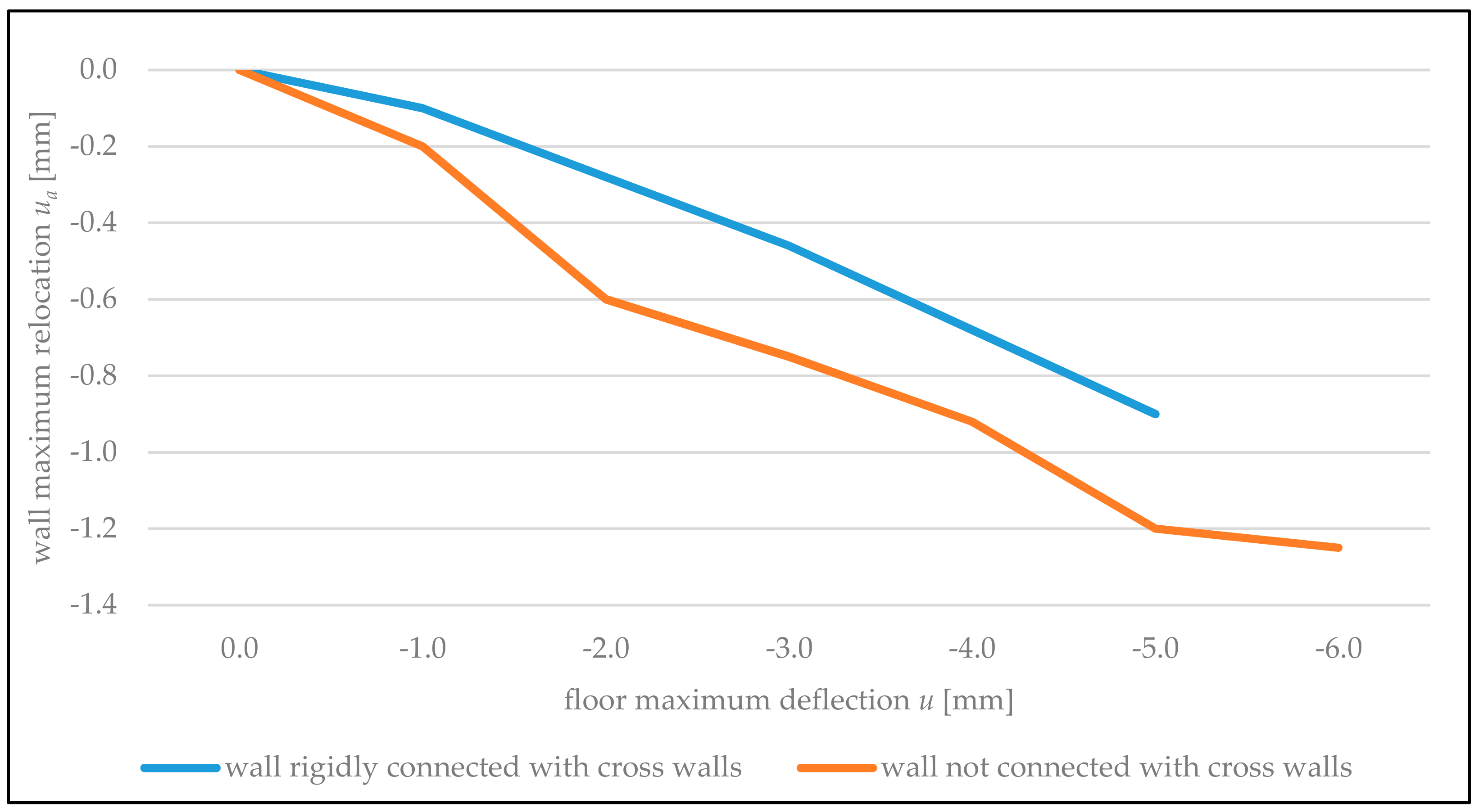
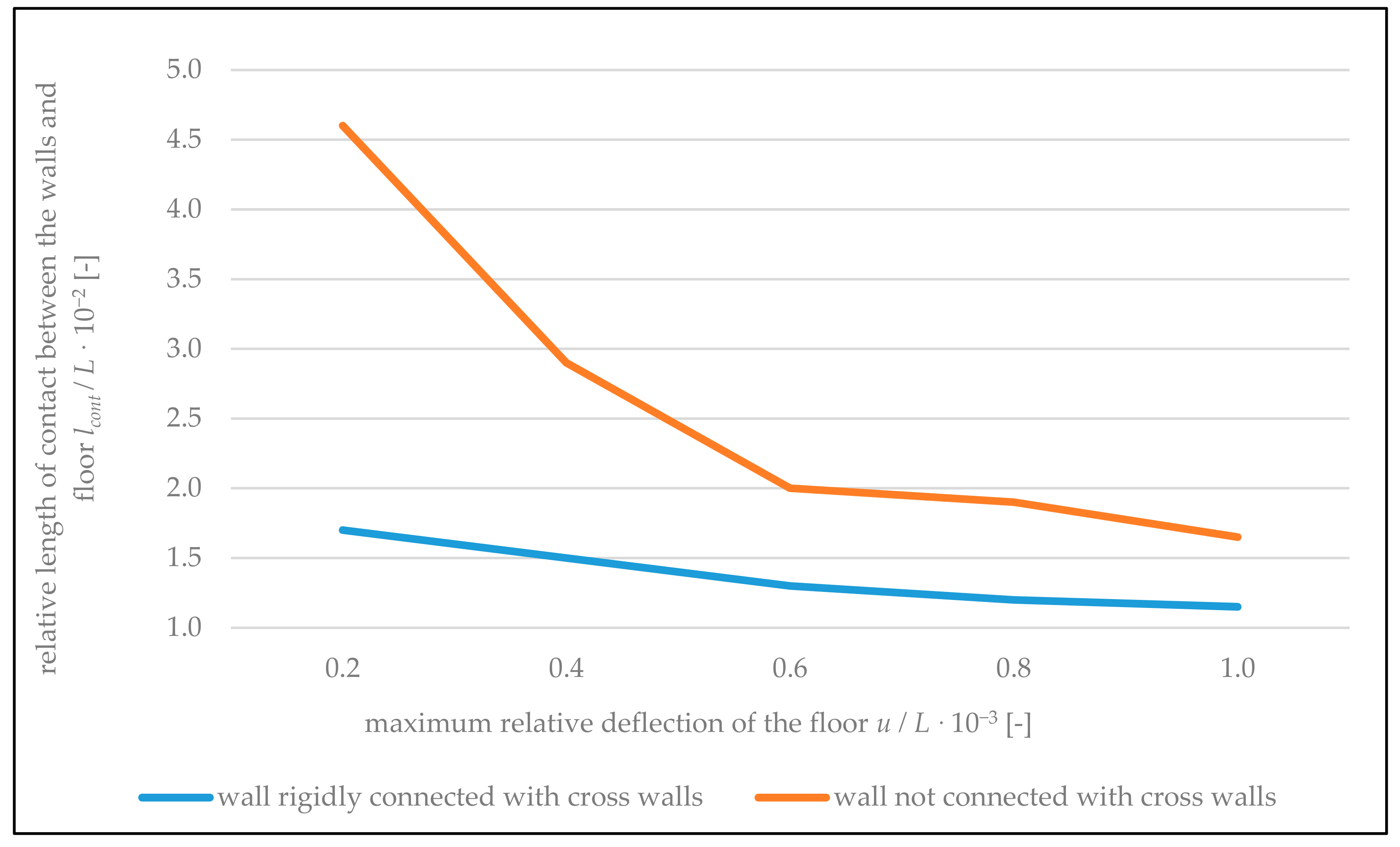
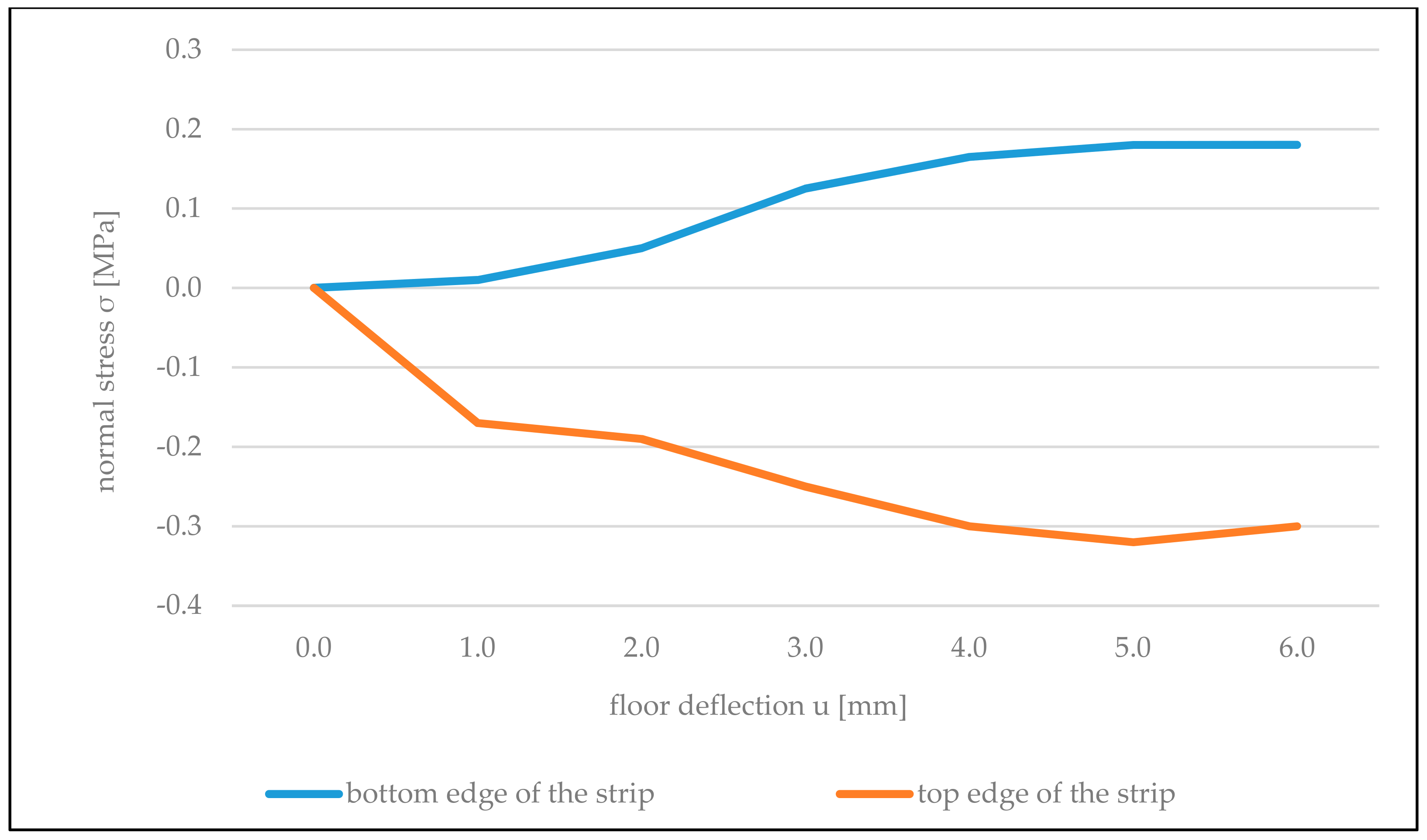
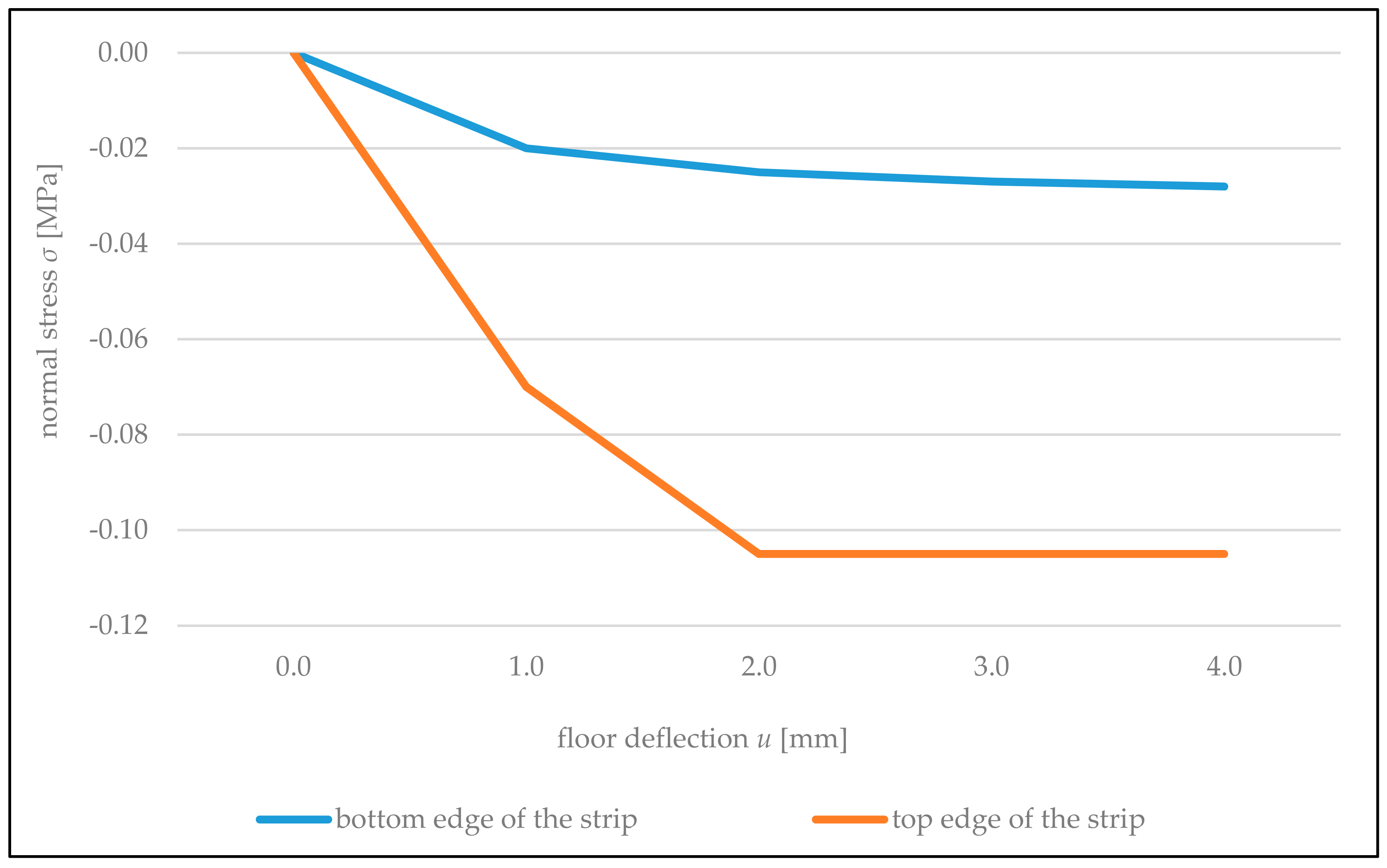
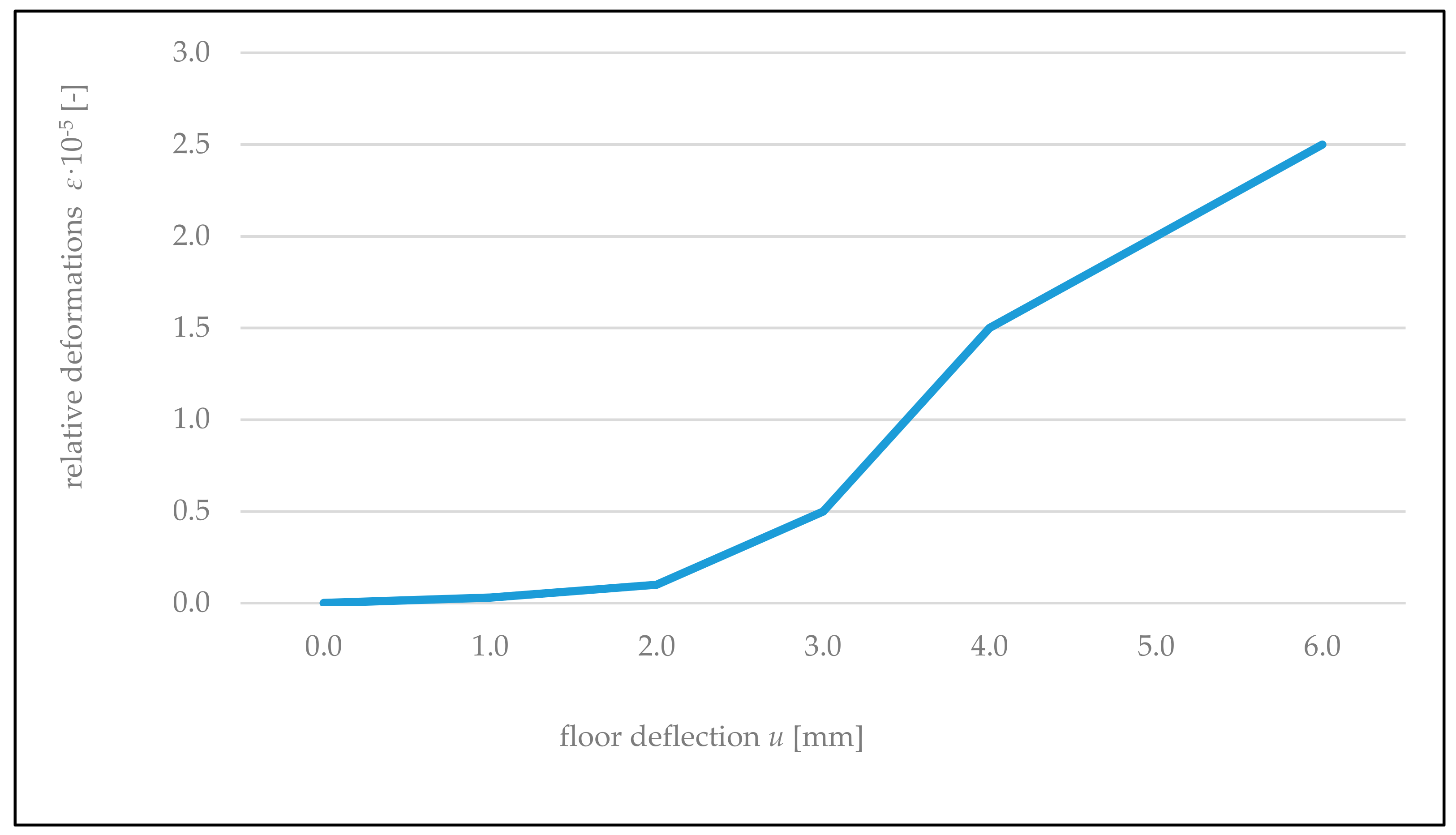
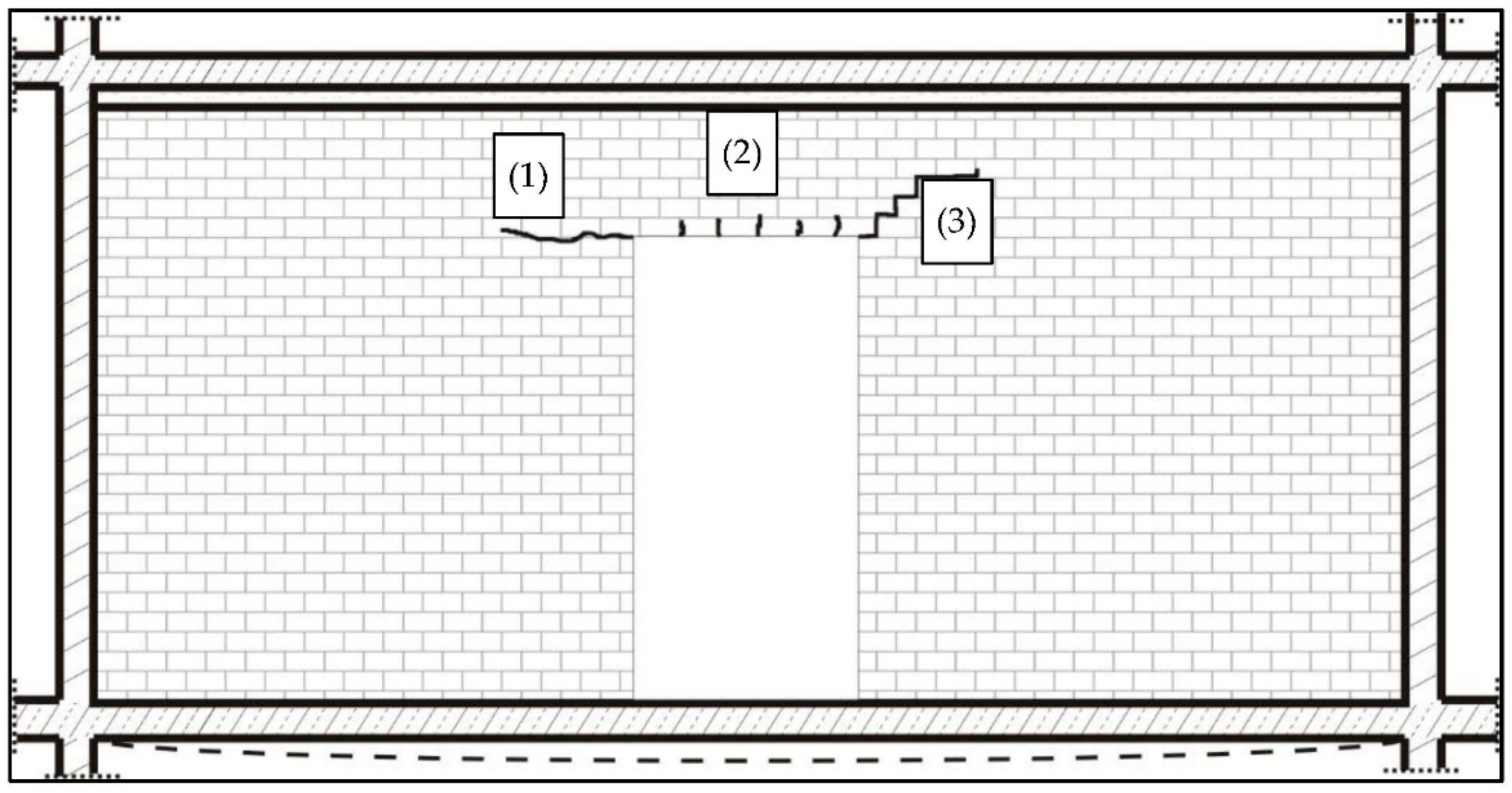
| Ordinal Number | Author and Date | Wall Type and Description | Bending Tensile Strength | Ratio of Deflection of the Supporting Structure to Its Span at Cracking |
|---|---|---|---|---|
| 1 | Meyerhof G., 1953 [4] | External brick walls without openings; different dimensions; analytical approach | 0.21 | 1/2000 |
| 2 | Beranek 1983 [5] | External brick walls with openings; different dimensions; analytical, and experimental approach | 0.1–0.3 | 1/2000 |
| 3 | Rolanda et al., 2003 [6] | Brick wall without opening in a scale of 1:3, experimental approach | - | 1/1000 |
| 4 | Pfeffermann et al. 1981 [7]; | Brick wall with an opening in a scale of 1:3, experimental approach | - | 1/946 |
| 5 | Loots et al.l 2004 [8] | Brick wall without opening in a scale of 1:2.5, experimental approach | - | 1/1200 |
| 6 | Piekarczyk 2019 [9] | Brick walls with (a) and without opening (b) asymmetrically loaded, experimental laboratory approach | - | 1/1700 (a)1/2800 (b) |
| Ordinal Number | Standard No | Country/Region | Maximal Ratio of Deflection of the Supporting Structure to Its Span or Maximal Deflection | Additional Information |
|---|---|---|---|---|
| [-] or [mm] | ||||
| 1 | ACI 318-08 [17] | USA | 1/480 | - |
| 2 | ACI-530-08/ASCE 5-08/TMS 402-08 [18] | USA | 1/600 or 7.6 mm | the lower value is decisive |
| 3 | BS 5628-2 [19] | UK | 1/500 or 20 mm | the lower value is decisive |
| 4 | DIN 1045-1 [20] | Germany | 1/500 | - |
| 5 | NBN B 03-003 [21] | Belgium | 1/1000 or 1/500 * | *—valid for unreinforced walls with openings |
| 6 | EN 13747: 2005 [22] | European Union | 1/350 or1/500 * | *—valid for brick walls |
| 7 | EN 1992-1-1: 2008 [23] | European Union | 1/250 or 1/500 * | *—value valid for the deflections affecting the non-load-bearing walls |
| 8 | PN-B-03264: 2002 [24] | Poland |
| Average Normalized Strength according to EN 772-1 1 | Compressive Strength in the Direction Horizontal to the Stretcher Surface | Flexural Tensile Strength | Shear Strength | Axial Tensile Strength |
|---|---|---|---|---|
| fby,mv (MPa) | fbx,mv (MPa) | fbtb,mv (MPa) | fbv,mv (MPa) | fbt,mv (MPa) |
| 18.37 | 7.50 | 2.97 | 2.81 | 0.99 |
| Compressive Strength of Masonry Walls (MPa) | Short-Term Modulus of Elasticity E (MPa) | Lateral Deformation Coefficient | |||||
|---|---|---|---|---|---|---|---|
| fcy,mv | fcx,mv | Ey,mv | Ex,mv | νxy,mv | νyx,mv | ||
| 5.2 | 3.5 | 1.49 | 5400 | 5642 | 0.96 | 0.26 | 0.27 |
| Initial Shear Strength | Internal Friction Coefficient | Tensile Strength across Supporting Joints | Tensile Strength along Supporting Joints |
|---|---|---|---|
| fv0,obs (MPa) | Tg α (-) | fw,obs (MPa) | ft,cal (MPa) |
| 0.18 | 0.63 | 0.16 | 0.22 |
Publisher’s Note: MDPI stays neutral with regard to jurisdictional claims in published maps and institutional affiliations. |
© 2021 by the authors. Licensee MDPI, Basel, Switzerland. This article is an open access article distributed under the terms and conditions of the Creative Commons Attribution (CC BY) license (http://creativecommons.org/licenses/by/4.0/).
Share and Cite
Kania, T.; Derkach, V.; Nowak, R. Testing Crack Resistance of Non-Load-Bearing Ceramic Walls with Door Openings. Materials 2021, 14, 1379. https://doi.org/10.3390/ma14061379
Kania T, Derkach V, Nowak R. Testing Crack Resistance of Non-Load-Bearing Ceramic Walls with Door Openings. Materials. 2021; 14(6):1379. https://doi.org/10.3390/ma14061379
Chicago/Turabian StyleKania, Tomasz, Valery Derkach, and Rafał Nowak. 2021. "Testing Crack Resistance of Non-Load-Bearing Ceramic Walls with Door Openings" Materials 14, no. 6: 1379. https://doi.org/10.3390/ma14061379
APA StyleKania, T., Derkach, V., & Nowak, R. (2021). Testing Crack Resistance of Non-Load-Bearing Ceramic Walls with Door Openings. Materials, 14(6), 1379. https://doi.org/10.3390/ma14061379







